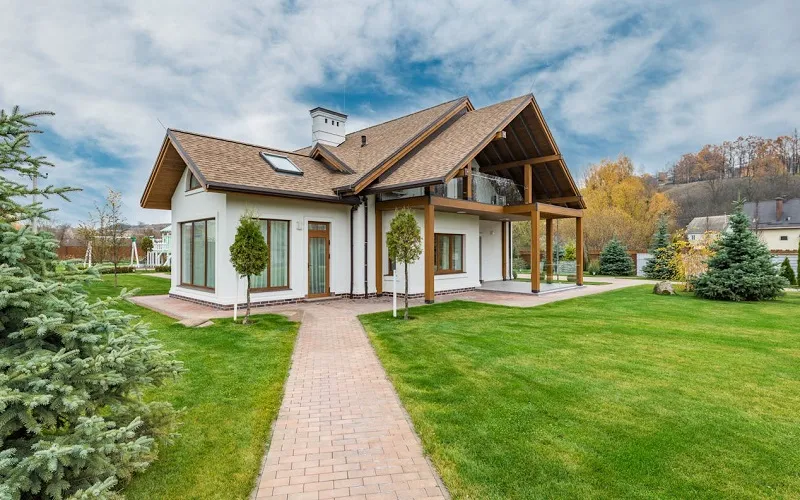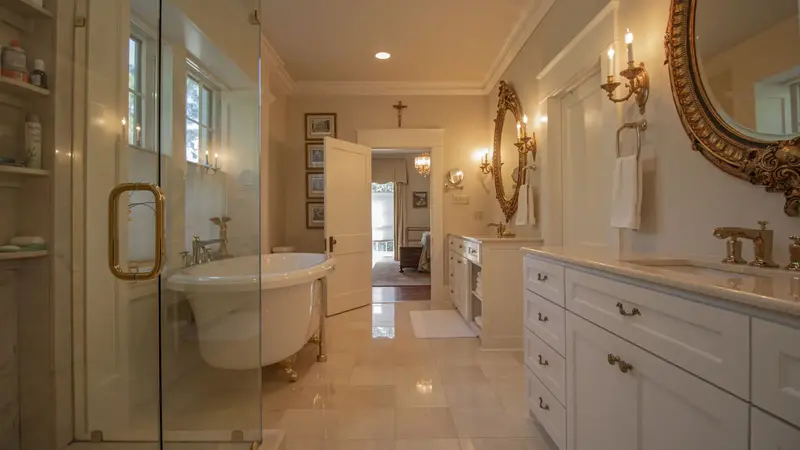Luxury home design has changed a lot over the past decade. It’s no longer about building the largest house on the block or filling it with ornate details. Today, modern luxury is about creating homes that feel comfortable, functional, and tailored to the way people actually live. From technology that makes life easier to spaces that bring the outdoors inside, luxury design has become more personal and practical than ever.
If you’re considering building or remodeling a home, staying on top of current design trends can help you understand what buyers value and what will stand the test of time. Let’s take a look at the features shaping and modern trends in luxury homes today.
1. Open Living and Seamless Flow in Modern Homes
One of the biggest shifts in high-end home design has been the move toward connected, flowing spaces. Homeowners today want a floor plan that feels bright and open, where people can move from one area to another without being cut off by walls.
This is where it helps to know what is open concept floor plan. Simply put, it’s a style that minimizes walls between main areas like the kitchen, dining, and living spaces. The result is a layout that feels larger, encourages natural light, and makes entertaining much easier.
Designers often use small details to create a sense of separation without closing spaces off. Varying ceiling heights, furniture groupings, or area rugs can signal different “zones” while keeping the open feel intact. This approach keeps a home airy and modern while still feeling organized and functional. Open living continues to be one of the most requested features in luxury homes because it fits both everyday routines and social gatherings.
2. Smart Technology as a Standard
Luxury homes are now expected to include advanced technology. Automated systems for lighting, climate control, and security aren’t just nice extras anymore—they’re must-haves. Homeowners can control these features with a tap on their phone or even through voice commands.
The appeal isn’t just convenience. Smart systems also help reduce energy use, improve security, and allow for personalization. For example, lighting scenes can be programmed for different times of day, and climate zones can adjust automatically to keep every part of the home comfortable. Modern luxury buyers value technology that feels seamless and intuitive. Many also appreciate that smart technology can be updated over time, allowing a home to stay current as new features are released.
3. Sustainable and Eco-Friendly Design
Sustainability is another growing trend that’s redefining what luxury means. Many homeowners are now asking for green building materials, high-efficiency appliances, and features like solar panels. Luxury design has expanded to include homes that not only look beautiful but also reduce environmental impact and lower long-term costs.
Energy-efficient windows, natural insulation materials, and water-saving fixtures are becoming common in upscale builds. Landscaping is also changing, with native plants and water-wise designs replacing traditional lawns. It’s not just about checking a box for sustainability—it’s about designing homes that balance elegance with responsibility for the future. For luxury buyers, eco-friendly features often add to the long-term value of the property as well.
4. Wellness-Focused Spaces
Modern luxury design also emphasizes health and wellness. Private gyms, yoga studios, meditation rooms, and even spa-like bathrooms are becoming standard in high-end properties.
The goal is to create a home that supports overall well-being, not just daily living. Natural light, air purification systems, and the use of calming materials like wood and stone all contribute to this trend. Larger bathrooms often include soaking tubs, steam showers, and heated floors to provide a spa experience at home. It reflects a shift toward seeing the home as a personal retreat, a place where both the body and mind can recharge.
5. Combining Indoor and Outdoor Living
One of the most exciting trends is the blending of indoor and outdoor spaces. Large sliding glass doors, covered patios, and outdoor kitchens allow people to enjoy both areas without feeling a divide.
Luxury homes now often include outdoor living rooms, complete with fireplaces, entertainment systems, and weather-resistant furniture. The ability to host gatherings that flow from inside to outside is highly appealing. Pools and water features are often integrated into these spaces, creating a resort-like atmosphere. This seamless transition is especially valued in warmer climates, where outdoor living can be enjoyed year-round, but even in cooler areas, features like fire pits and heated patios are extending the usability of outdoor spaces.
6. Customization and Personal Expression
Gone are the days when luxury homes followed a predictable pattern. Today, homeowners want spaces that reflect their unique lifestyle and personality. Custom features like wine cellars, art galleries, or libraries allow people to showcase what matters most to them.
This trend also extends to smaller details. From choosing unique finishes to designing one-of-a-kind kitchen layouts, customization has become a core part of luxury design. Rather than focusing solely on resale value, buyers now want a home that feels distinctly theirs. Architects and designers are increasingly collaborating with clients to create signature features that set a home apart, whether that’s a chef-inspired kitchen, a two-story closet, or a private movie theater.
7. Flexible Rooms for Modern Lifestyles
Flexibility has become a necessity in luxury home design. With remote work and changing family needs, homeowners want spaces that can serve more than one purpose. A guest room may double as a home office, or a den might convert into a media room.
This trend ensures homes can adapt over time. Families appreciate layouts that evolve as children grow up or as work-from-home arrangements change. Versatility is just as much a part of luxury as high-end finishes. Designers are responding by creating rooms that can be easily updated with sliding doors, movable partitions, or built-in furniture that adjusts to different uses.
Modern luxury home design is about much more than appearance. It’s about creating a space that combines elegance with everyday practicality. Open living areas, smart technology, sustainable features, wellness-focused spaces, indoor-outdoor connections, customization, and flexibility are all shaping what luxury means today.
As these trends continue to evolve, one thing remains clear: luxury homes are becoming more personalized, more efficient, and more attuned to the needs of modern life. Whether you’re designing your dream home or just exploring ideas, these features offer a glimpse into the future of high-end living.




